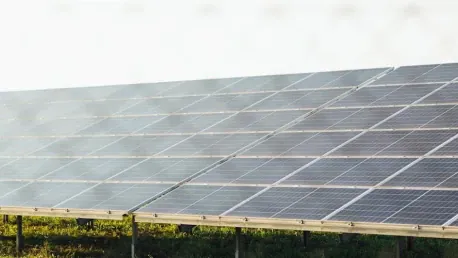In an ambitious effort to promote clean energy while utilizing existing agricultural land, a cranberry bog in Carver, Massachusetts has been repurposed to host a community solar plant known as the Carver Solar project. This initiative, led by the New York-based solar developer Syncarpha Capital, highlights the innovative use of dual-purpose land. Featuring a 7.1 MW-DC solar installation paired with a 4 MW x 2-hour battery storage system, the Carver Solar project stands as a testament to the integration of renewable energy within traditional farming landscapes. The generated energy, estimated to produce around 9,500 MWh of clean power in its first year, is earmarked for local residents and institutions, including 350 low-income residents, Tufts University, and Milton Academy.
Energy Resilience and Accessibility
Assisting Low-Income Households
One of the standout aspects of the Carver Solar project is its approach to enhancing energy resilience and accessibility, particularly for low-income households. By distributing solar energy without requiring individual home installations, the project ensures that economically vulnerable populations benefit from sustainable energy solutions. This system is notably facilitated through Eversource Energy under the Solar Massachusetts Renewable Target (SMART) program, which ensures a streamlined and equitable distribution of the generated solar power.
Additionally, the battery storage system incorporated into the project plays a crucial role in balancing energy supply and demand. During peak demand periods, the stored energy can be deployed, enhancing grid reliability and preventing power outages. This ability to store and utilize energy when needed not only stabilizes the local energy grid but also provides cost savings to residents by offsetting the need for more expensive energy generation during high-demand times. As of June 2024, around 7.87 GW of community solar projects operate across 44 states, providing an average savings of approximately $0.27 per watt for customers.
Community-Wide Benefits
Beyond just individual households, various local institutions also stand to benefit significantly from the Carver Solar project. Tufts University and Milton Academy are among the educational institutions that will receive discounted solar energy credits, aiding them in reducing operational costs while promoting their sustainability initiatives. The commitment of these institutions to renewable energy exemplifies a growing trend among educational bodies to adopt cleaner energy solutions, thereby influencing broader societal shifts toward sustainability.
The project also serves as a model for community-wide cooperation in the adoption of renewable energy. By pooling resources and distributing the benefits among various stakeholders, the Carver Solar project demonstrates how collaborative efforts can multiply the positive impacts of renewable energy initiatives. This approach not only creates economic and environmental benefits but also fosters a sense of community resilience and mutual support in transitioning to greener energy systems.
Challenges and Concerns
Environmental and Agricultural Impact
Despite the numerous benefits touted by the Carver Solar project, it has not been without its opponents. Local opposition, particularly from the Carver Concerned Citizens group, has raised valid concerns regarding the environmental impact of solar installations on cranberry bogs. Specifically, there is apprehension about potential contamination from chromated copper arsenate (CCA)-treated wooden poles used to support the solar panels. This chemical, known for its toxicity, could pose risks to the surrounding agricultural environment, undermining the eco-friendly goals of the solar project.
The Carver Conservation Commission, in response to these concerns, has advocated for the use of safer materials, such as pre-cast concrete, for similar projects. This precautionary measure aligns with the broader objective of ensuring that renewable energy projects do not inadvertently harm the environments they aim to protect. The concerns voiced by local stakeholders highlight the importance of balancing innovation with environmental stewardship, ensuring that sustainable practices encompass all aspects of project implementation.
Striking a Balance
In an ambitious attempt to promote sustainable energy while utilizing agricultural land, a cranberry bog in Carver, Massachusetts, has been transformed into a community solar farm called the Carver Solar project. Leading this innovative initiative is New York-based solar developer Syncarpha Capital. This project exemplifies the creative use of land for dual purposes. It features a 7.1 MW-DC solar installation combined with a 4 MW x 2-hour battery storage system. This project is a prime example of integrating renewable energy with traditional farming landscapes. The generated power is predicted to produce approximately 9,500 MWh of clean energy in its first year. This clean energy will be distributed to local residents and institutions, including 350 low-income households, Tufts University, and Milton Academy. The Carver Solar project not only supports environmental sustainability but also delivers tangible benefits to the local community, highlighting the practical application of renewable resources.









